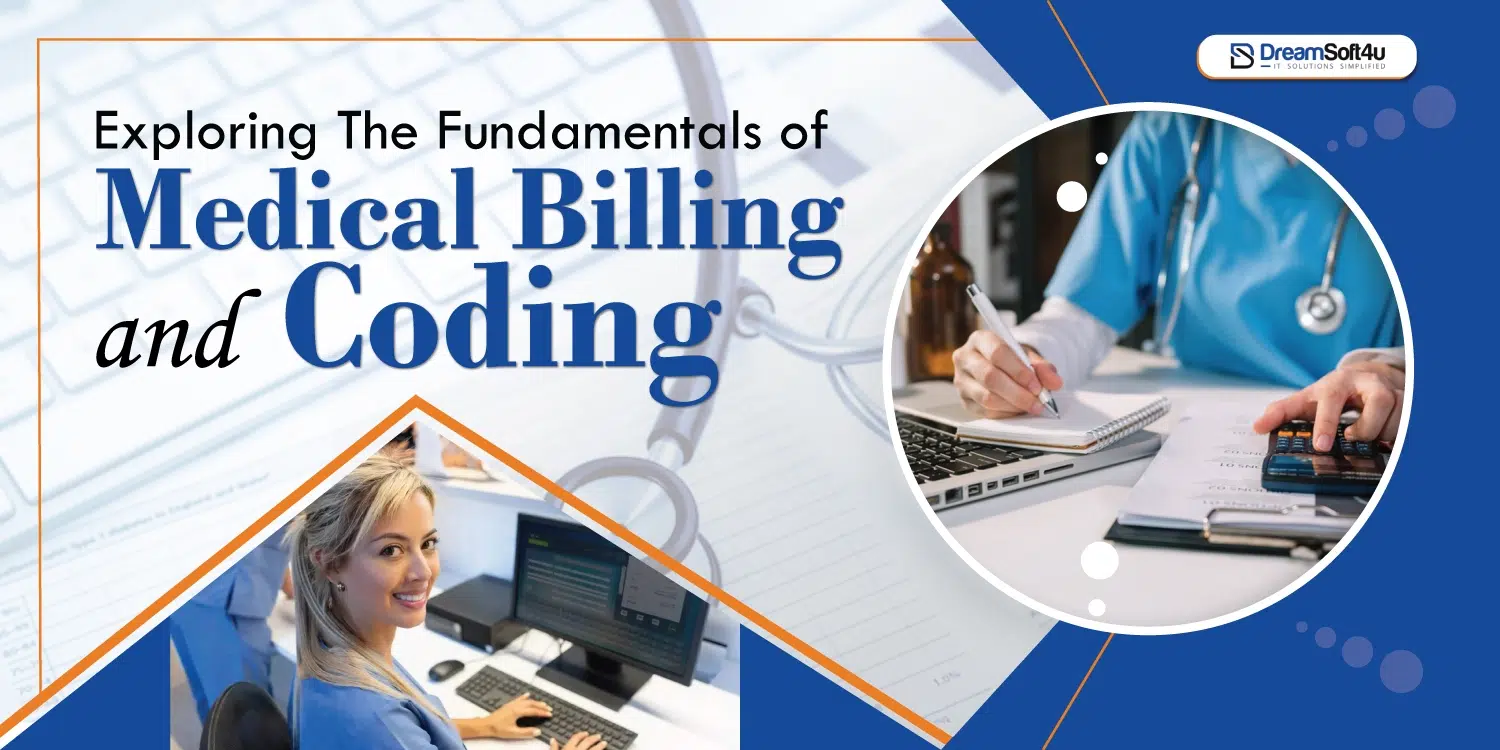Medical billing and coding are the most important aspects of the healthcare industry. The healthcare app development company ensures that the merchants are paid for the services delivered. Therefore, medical coding transforms information about the patients into coded forms that can be useful when dealing with insurers’ language. Billing then uses these codes to conduct billing, make claims, and produce the bills. It is essential to discern these basics to perfect the workings of the healthcare revenue cycle. In this blog, the reader will find information about the medical billing codes that will equip healthcare workers with adequate information to manage this critical process effectively and economically while maintaining high-quality patient services.
Table of Contents
ToggleWhat is Medical Coding?
Although it also applies to the all-important issue of insurance coverage, for each diagnosis and medical treatment. Medical Billing and Coding Software varies in that it requires a specific code. Translating diagnoses and procedures into these common codes makes it easier for the health care provider to accurately process the bill.
Every time you see a healthcare provider, medical coding occurs. The healthcare professional reviews your complaint and medical history. And decides what’s wrong and how to handle you with an expert evaluation, and records your appointment. This paperwork is not only the continuous record of the patient; it is how the healthcare provider gets paid.
Types of Medical Codes
If a patient has been assessed for a test or other treatment. The medical coder must then allocate a particular code to each of these acts. There are three major coding manuals for medical billing and coding, which include all the potential codes that a medical coder may use for a reimbursement claim.
1. Current Procedural Terminology (CPT):
Current Procedural Terminology is a guide to the patient’s treatments and facilities. Since its introduction back in 1966, CPT codes have undergone several revisions to adapt to the ever-changing medical climate and will continue to do so. The healthcare reform bill takes effect, but all of these codes cover a broad range of physician-administered services. For each patient, these codes are collected and then sent for reimbursement to an insurer or other payer like Medicare, by the practice.
2. International Classification of Diseases (ICD)
The 10th Edition of the International Classification of Diseases, which applies to diagnostic codes. These codes have been around since 1893 but on the basis of reviews and feedback from payers, doctors and other medical contributors. The edition used in the United States has been revised annually. ICD-9-CM code and its three volumes, required by the 2003 HIPAA Act, are mandatory for all physicians and coders to know. An expanded version, known as ICD-10-CM, will be released in 2013, and ICD-11-DM will be released in 2015. It will include a larger and more advanced code set to be better represented.
3. Healthcare Common Procedure Coding (HCPC)
HCPC Scheme, which applies to the majority of the patient’s miscellaneous supplies and medications in the healthcare setting. HCPC has two levels of code sets that are used specifically for emergency services, durable medical equipment, prosthetics, supplies, hospital outpatient treatment, chemotherapy medicines, and more. On a quarterly basis, this set of codes is revised and changes are made based on public input.
Coders merge these three sets of codes on insurance claims and then submit them for reimbursement to insurance agencies. This is what they are being used for: In order to demonstrate to the insurance company that the patient comes in for health care, ICD-10 diagnosis codes are used.
The code J02.9, for instance, reflects the diagnosis of pharyngitis, or sore throat. If the code J02.9 is put on the medical claim by the coder. It informs the insurance company that the patient has been seen because of a sore throat complaint. CPT, or treatment, codes, inform the insurance company what operations on that day they were seen were carried out on the patient.
The code 99213 is used, for instance, to describe a standard office visit. When the code 99213 on the claim is used by the coder. It informs the insurance firm that a mid-range office visit was done by the medical provider. HCPCS is used to represent all other miscellaneous services or equipment rendered to a patient on the day they were seen, or supply codes.
4. Diagnosis-Related Groups (DRG)
The most general application of DRG codes is to group cases together for billing purposes for the hospital it was done primarily for. Currently, Medicare and most other third-party payors rely on these codes to gauge hospital payments for patient services. DRG codes appear as individual diagnosis codes with the related procedure codes or multiple procedures. They assist users in harmonize payments and making the costs more straightforward to manage. For instance, DRG 470 is called major joint replacement or reattachment of a lower extremity. It guarantees that hospitals receive adequate compensation for doing these large operations.
5. National Drug Codes (NDC)
NDCs are the unique numbers assigned to drugs at the national level. They enable one to distinguish the drug products by the manufacturers, the products and the size of the packets. The U.S. Food and Drug Administration, known as the FDA, supervises this system for processing pharmacy claims and stock and drug recalls. Every NDC is a ten-digit number that gives specific details about the drug. For instance, ‘NDC 12345-6789-10’ conveys a particular type of drug and its container, ensuring that the involved healthcare personnel and pharmacies give the right medication to patients. Ask the medical billing software development company to integrate NDC into your healthcare app.
Why are they essential?
The insurance companies that provide your health coverage are often called health plans. Healthcare providers, such as doctors, submit claims to health plans to ask for payment. They use medical billing codes to show the health plans and the services they give to patients.
CPT and HCPCS codes are only charged for care providers because they reflect real services and supplies provided to the patient. A good education in medical terminology and proper coding also makes the process of coding go much faster. And allows coders to handle more customers.
It is possible to unintentionally (or purposely) code for the wrong stuff because of the existence of medical coding. This is known as fraud or violence and is a very serious crime that can be punished by fines and even time in prison. Because of this, coders must establish protections against fraud and misuse of medical billing codes.
Each code is subject to an individual fee, which is charged by the insurance provider separately. This suggests that providers do not pay for diagnostic codes, and insurance firms will not pay for them.
Conclusion
It is understanding the basics of medical billing and coding. It helps in managing healthcare payments and records. Additionally, it ensures accurate billing, reduces errors, and helps healthcare providers get paid on time. This process involves translating medical procedures into codes. As a result, insurance companies can utilize these codes to bill patients. By mastering these fundamentals, you can improve the efficiency of healthcare services and contribute to better patient care. Whether you’re a beginner or an experienced professional, this knowledge is crucial in the healthcare industry.
FAQs
Q1 What is medical billing and coding?
Medical billing and coding involve translating healthcare services into standardized codes. These codes create billing claims, which are then submitted to insurance companies for payment.
Q2 What is medical billing and coding?
It ensures that healthcare providers are remunerated suitably and on time. It also assists in documenting various aspects of a patient’s clinical status and helps avoid common billing mistakes.
Q3 For whom is medical billing and coding used?
Medical billing and coding are the methods by which healthcare providers, insurance companies, and the billing department process claims and try to manage or organize patients’ data.
Q4 What are the important qualifications for medical billing and coding?
Some of the skills include focus, medical language knowledge, knowledge of the coding system (ICD & CPT), and knowledge of the medical billing software.
Q5 How can I learn medical billing and coding?
You can learn by doing homework or acquiring an online course, through a community college, or vocational school. Several programs provide certifications that enable a person to get a job in this field.





















